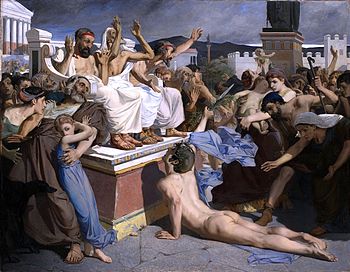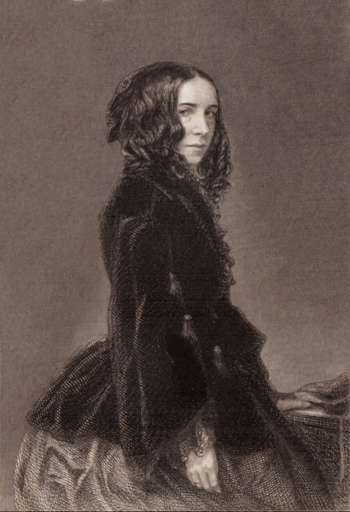Mac Barnett enjoys talking to children. He enjoys it so much he's made a successful career out of writing everything from picture books to novels just for the junior set. At 32, Barnett has already racked up accolades for his work too, winning the Caldecott Honor, the Boston Globe-Horn Book award, and the E.B. White Read-aloud award for his 2012 picture book, Extra Yarn, which was illustrated by fellow award recipient (and longtime friend) Jon Klassen.

(Photo Credit: Jeffrey Beall/Wikimedia Commons)
Earlier this summer the author spoke with me from a farm in California where he was working the land and awaiting the arrival of the first hardbound copies of Barnett and Klassen's forthcoming collaboration, Sam and Dave Dig a Hole (Candlewick Press; available October 14th, $16.99). We discussed the importance of creating good children's literature and what Barnett calls the literary bargain children happily make when choosing a book.
Text for picture books are all about setting up the accompanying image, and for Barnett to realize that goal, he and Jon Klassen collaborated extensively on Extra Yarn as well as Sam and Dave, which is often unheard of in today's publishing environment. "The picture books I love so much from the 1950s and '60s were often constructed with authors and illustrators constantly pitching ideas back and forth, with the story and images changing throughout the process," said Barnett. Think of Ruth Krauss and Maurice Sendak, toiling away in the same apartment, then visiting the editor together to defend their product. Such close contact often produces powerful books that stand the test of time.
Whether writing picture books or middle-grade mystery novels, Barnett seems moves seamlessly from either sphere, even with each genre demanding distinct requirements from the author. As an undergraduate at Pomona College, Barnett studied writing with Infinite Jest author David Foster Wallace. "I told Wallace that I wanted to write for kids, and he said, 'I have no idea how to write for kids.' That's wasn't what I was there to learn," Barnett recalled. "I knew how to talk to kids. I wanted to learn writing, because I think they deserve the best art and the best sentences that we can make for them." After graduating, Barnett set himself a deadline of writing a book within the year, and if it didn't happen, he would return to school and pursue his other passion, medieval Scandinavian literature.
Children are fortunate that Barnett found success because he believes so passionately in the importance of solid literary choices for young readers, and his work delivers. "Children are the best audience for serious literary fiction, there are a lot of things adults find too strange." Barnett uses the
Margaret Wise Brown's
Goodnight Moon, as an example. "It is a weird book. And it has this status as a classic, and most reassuring of all picture books. And I think that it is, but it is also incredibly dark. Strange things happen - clothes disappear from on and off the drying rack. It's a very strange book, with strange rhythms, but it is so deep and incantatory and taps into a very real childhood fear of going to sleep, which is also linked to a fear of death. And that's why I think it is so comforting." Still, a book this unusual is one of the best selling picture books of all time. Barnett feels children will read experimental literature because "the experience of childhood is experimental. Children are constantly having to learn new rules for new situations."
Barnett finds children to be the very best critics of all. "Either children love your work, or they don't. And they don't mince words. They'll tell you."






















